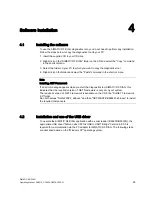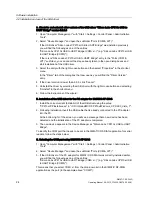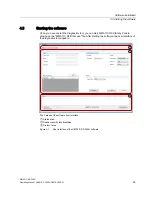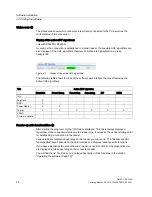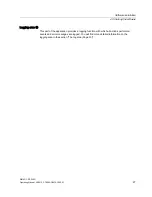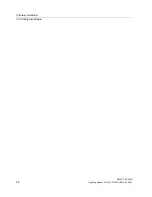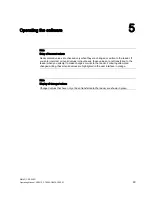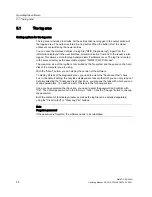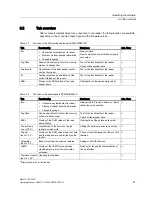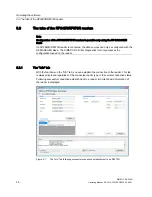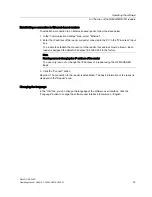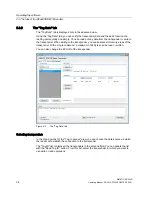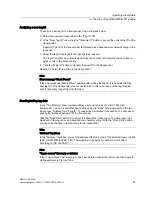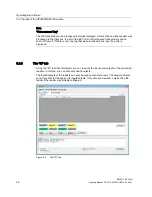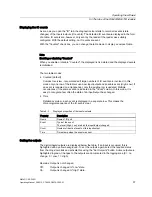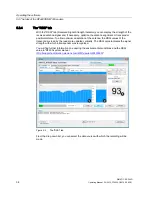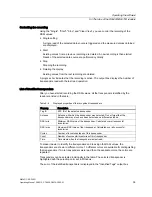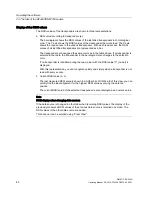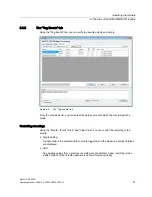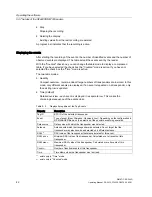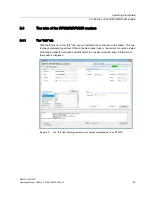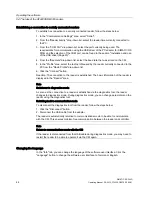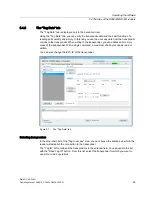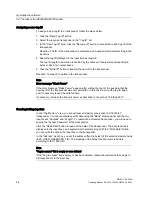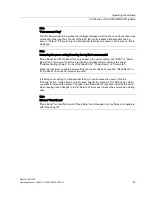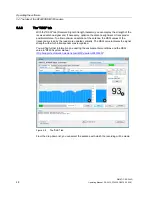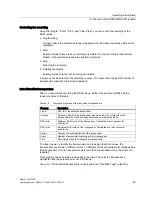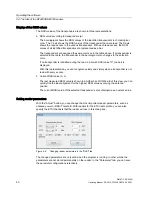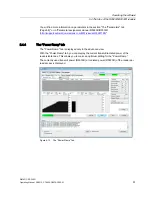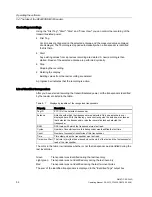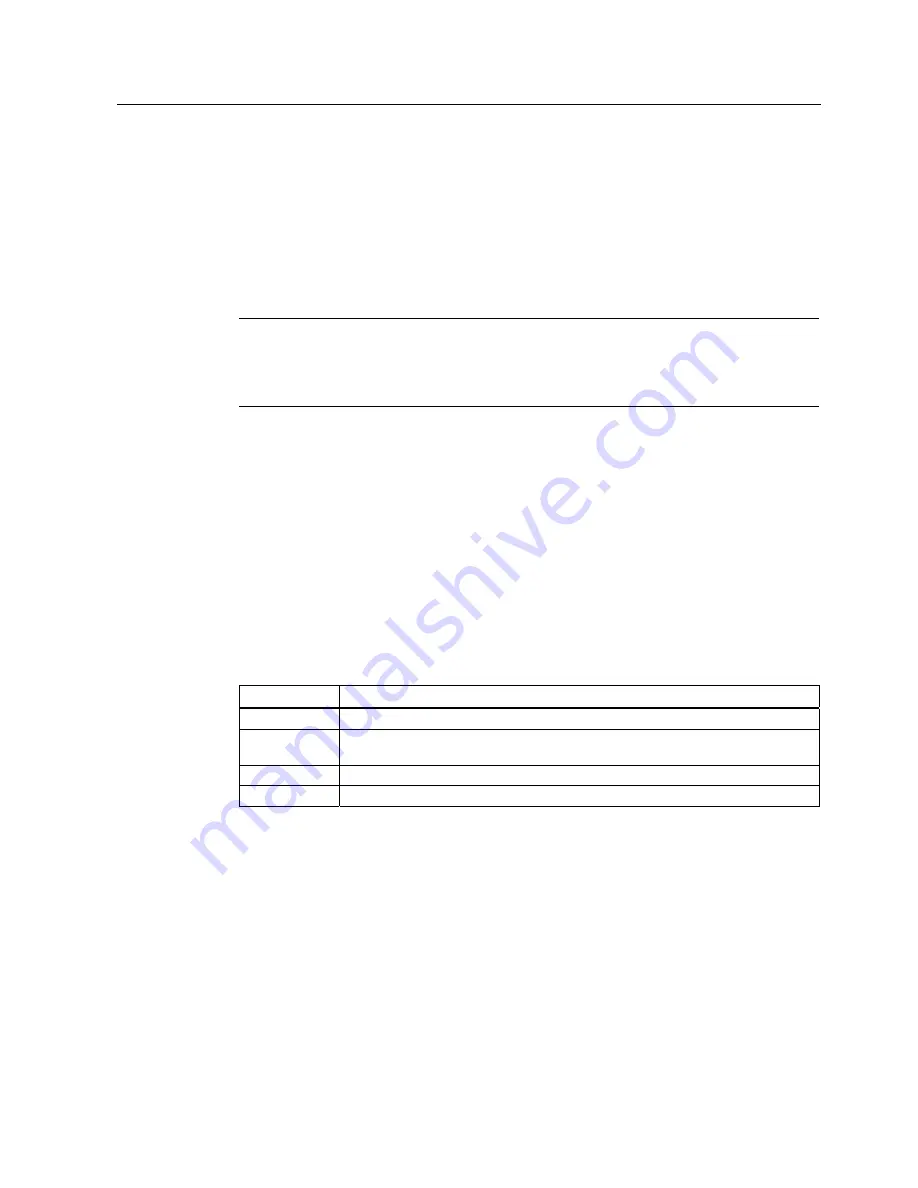
Operating the software
5.3 The tabs of the RF640R/RF670R readers
SIMATIC RF-DIAG
Operating Manual, 09/2012, C79000-G8976-C292-01
37
Displaying the IO events
As soon as you open the "IO" tab, the diagnostics tool starts to record all events (state
changes) of the inputs/outputs (IO events). The detected IO events are displayed in the form
of a table. IO events are, however, only sent by the reader if the reader was suitably
configured. With the default setting, no IO events are sent.
With the "Counted" check box, you can change the table mode to display a compact table.
Note
Enabling or disabling "Counted"
When you enable or disable "Counted", the displayed list is deleted and the displayed events
re-initialized.
The two table modes:
●
Counted (default)
Compact overview - recommended if large numbers of IO events are involved. In this
mode only one row of the table is used per input/output and possible event (High, Low). If
an event is repeated on a transponder, only the existing row is updated. Multiple
occurrences of the same event are indicated in the "Count" column. In this mode, it is
easy to recognize how often the state of an input/output has changed.
●
Time
Detailed overview - each event is displayed in a separate row. This makes the
chronological sequence of the IO events clear.
Table 5- 3
Displayed properties of the inputs/outputs
Property
Description
Name
Name of IO port.
Event
Type of the event.
The level (High, Low) at which the input/output changed.
Count
Number of identical events of this input/output.
Time
Time stamp when the event was sent.
Setting the outputs
The digital inputs/outputs are displayed below the table. If an input is occupied, this is
highlighted with a yellow background. To set the outputs again, select the required status
from the drop-down lists and activate this using the "Set Outports" button. Active outputs are
highlighted in green. Changes to the outputs are documented in the logging area (X = no
change, 0 = Low, 1 = High).
Remains: Output is not changed.
Off:
Output is changed to "Low" state.
On:
Output is changed to "High" state.

